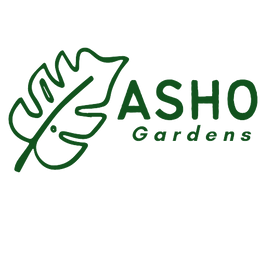


20+ Organic Spaghetti Squash Seeds- Heirloom Seeds-Cucurbita Pepo --A174
20+ Organic Spaghetti Squash Seeds- Heirloom Seeds-Cucurbita Pepo -A174
Description and Introduction:
Native to Central America and Mexico, spaghetti squash is from the same family as zucchini and acorn squash, among others. Spaghetti squash growing is one of the more popular gardening activities because the plant is easy to grow and provides a large amount of essential nutrients. The name of the spaghetti squash comes from its unique flesh. When cooked, the fibers give the squash a very distinctive strands that look a lot like orange spaghetti. The added texture makes spaghetti squash a favorite with children who turn their noses up at the softness of other types of squash.
Squashes of all kinds are very healthy, and often eaten more as a starch than a vegetable in a meal. You can’t eat spaghetti squash raw, and its best baked. The inside flesh is scraped out with a fork, to help bring out the “spaghetti” nature of the squash. The Starting from Seed Spaghetti squash need a long growing season and warm temperatures, and that includes warmth at planting time. So any seeds would have to go out after your frost date as passed. But starting your seedlings indoors is a common way for gardeners to start their squash plants.
Plant your seeds inside about a month before your local last frost date. Squash seedlings will grow fairly large in a month, so small 6-pack style seed trays won’t likely suffice. If you start them that way, you’ll have to replant them in larger containers before your outside plant date. Three or four seeds can go in each 3″ pot, about 1″ deep under the soil. They’ll need to be kept somewhere warm as well as sunny in order to properly germinate and sprout..
They are extremely high in vitamin A, and also good sources of potassium, fiber and vitamin C
Days to germination: 10 to 14 days
Days to harvest: 90 to 100 days
Light requirements: Full sun
Water requirements: Regular watering
Soil: Loose, fertile and well-draining soil
Plant Spacing: 24"
Zone: 3-9
Season: Annual
Temp: 50 and 55 F. (10-13 C.)
Container: Possible but not ideal Plan to put your seedlings into the garden about 2 weeks after the date of your last spring frost. Your soil should be dug up thoroughly to get it loose for the big seedlings, and mix in some aged manure or compost while you are at it. Squash likes nutrients in its soil. Your squash spot needs full sun, and you should allow for 3 feet between each hill (you will just be planting one pot in each location, with 3 or four seedlings in it). If you are not starting with indoor-grown seedlings, you will still have to wait for 2 weeks past the frost date. If you’ve had cool weather, you can lay black plastic down over the garden before planting to help warm up the soil. The seeds won’t sprout in the cold. Plant them in hills, just like you did with the transplants, about 3 per hill. Many squashes can be grown vertically to save space, but this isn’t the best idea with a spaghetti squash. The fruits are just too big and it is awkward to try and support them on the vine when hanging in mid-air. It can be done, as long as you are willing to put in a bit of extra effort with your trellis and support structures.
Growing Instructions: Keep your plants watered, and weed-free while the leaves are developing. Once the wide leaves are fully grown, they will start to shade their surrounding soil and will keep the weeds out without your help. After the peak of the summer has passed, you should remove any new blossoms that your squash vines produce. There won’t be enough time left for them to mature and the plant’s resources would be better used growing the already-developing squash on the vine. Because the squash will be growing for the full length of the season, they can be prone to getting rot underneath where they lay on the soil. You can help protect your squash with tiles or coffee can lids under each fruit. Containers
Tips on Growing Spagetti Squash: Spaghetti squash requires warm soil that is well-drained and fertile. Aim for no more than 4 inches of organic compost. Seeds should be planted in rows in groups of two about 4 feet apart about an inch or two deep. Each row should be 8 feet from the next. Consider adding black plastic mulch, as this will keep weeds away while promoting soil warmth and water conservation. Make sure to water the plants 1 to 2 inches each week. Drip irrigation is recommended by Utah State University, if possible. It takes about three months (90 days) for the winter squash to mature. Winter squash should be stored in an area that is cool and dry, between 50 and 55 F. (10-13 C.).
According to Cornell University, you should harvest spaghetti squash when its color has changed to yellow, or more appropriately, golden yellow. In addition, harvest should take place prior to the winter’s first heavy frost. Always cut from the vine rather than pulling and leave a few inches of the stern attached. Spaghetti squash is rich in Vitamin A, iron, niacin and potassium and is an excellent source of fiber and complex carbohydrates. It can be baked or boiled, making it a great side dish or even main entrée for dinner. The best part of it all is if you grow it yourself, you can grow it organically and consume food that is free from harmful chemicals and 10 times more delicious.
